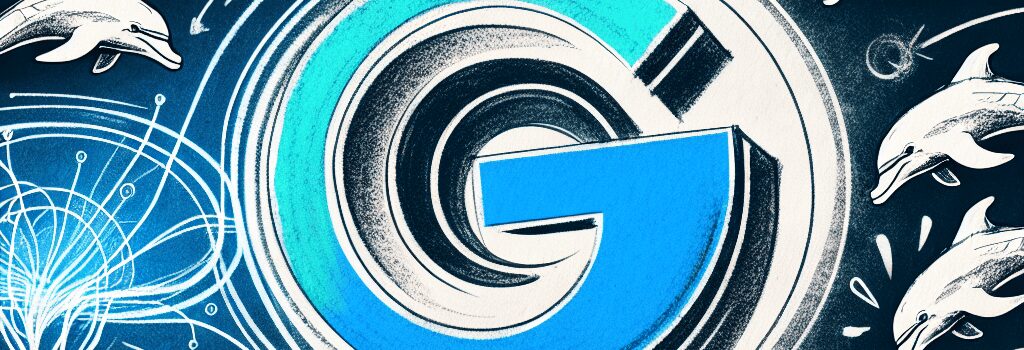Google Unveils DolphinGemma: A Breakthrough AI Model for Dolphin Communication

Dolphins have long fascinated researchers with their advanced social behaviors and intricate vocalizations. Today, Google, in partnership with the Wild Dolphin Project (WDP), is taking a major step forward by introducing DolphinGemma — a new AI model designed to analyze and eventually interact using the language of Atlantic spotted dolphins. With its first field tests slated for this summer, DolphinGemma is positioned at the intersection of generative AI and marine biology.
Background and Research Motivation
Dolphins are recognized for their intelligence, evidenced by their ability to cooperate, teach one another, and even demonstrate mirror self-recognition. For decades, scientists have attempted to decode the complex patterns of whistles and clicks that comprise dolphin communication. The Wild Dolphin Project, active since 1985, has meticulously recorded and annotated hours of underwater audio and video data, creating one of the most comprehensive data sets available. This research underpins the development of DolphinGemma, with a keen aim: to understand if dolphin vocalizations satisfy the criteria of a language.
Technical Overview of DolphinGemma
At its core, DolphinGemma leverages Google’s Gemma open AI models that share a foundation with the company’s commercial Gemini models. The model processes audio inputs using advanced techniques developed through Google’s SoundStream technology. SoundStream tokenizes the unique vocal patterns of the dolphins, converting complex sound waves into data tokens the AI can analyze. With around 400 million parameters, DolphinGemma is relatively compact compared to many large language models designed for human language, ensuring efficient processing on mobile hardware.
This tokenization approach means that much like human-centric models, once a dolphin vocalization is received as input, the system predicts the next audio token to produce a coherent sound output. In essence, the system is attempting to generate sequences that could be interpreted as meaningful communication by dolphins themselves. This audio-to-audio transformation is a significant leap towards establishing a shared vocabulary with marine mammals.
Hardware Integration and Field Deployment
DolphinGemma is designed with the constraints of field research in mind. The Wild Dolphin Project occupies remote underwater environments where compact, efficient hardware is critical. The team historically has used the CHAT (Cetacean Hearing Augmentation Telemetry) system originally developed at the Georgia Institute of Technology on Pixel 6 devices. This device not only records high-quality audio in dynamic underwater environments but also utilizes template matching algorithms to generate synthetic dolphin vocalizations based on environmental cues.
Looking forward, Google is rolling out an upgraded version of CHAT based on the Pixel 9 platform for the summer 2025 research season. This upgraded system will simultaneously run deep learning models and template matching, significantly enhancing the speed and accuracy of real-time analyses. Although the current focus is on using DolphinGemma to analyze and predict dolphin sounds, future iterations may directly interface with CHAT to create interactive, two-way communication channels.
Deep Dive: The Intersection of AI and Marine Biology
The creation of DolphinGemma not only showcases the adaptability of generative AI models beyond human language but also opens up new avenues in marine biology. By automatically parsing decades of audio data, the model can detect subtle patterns and correlations within dolphin vocalizations that would be nearly impossible for human researchers to discern manually. For instance, the distinctive “signature whistles”—akin to individual identities—can be rapidly classified, and potentially, correlated with specific behavioral patterns.
Moreover, through pattern recognition, the AI might eventually decode the contextual meaning behind specific sound patterns like the “squawk” noises frequently recorded during aggressive interactions. As the model becomes refined, marine biologists may gain unprecedented insights into the social structures and communication strategies of dolphins, potentially aiding in their conservation and management.
Enhanced Technical Specifications and Expert Opinions
Industry experts have lauded the approach of using an audio-in, audio-out model for studying animal communication. Dr. Alison Kumar, a noted expert in computational biology, comments, “The use of advanced tokenization through SoundStream, combined with a generative model trained on meticulous datasets, represents a paradigm shift in how we study and potentially interact with non-human species.”
Technically, the 400 million parameters in DolphinGemma enable a balance between model complexity and the need for operational efficiency on devices like the Pixel 9. Given the constraints of mobile processing environments, this model is engineered to provide high-resolution sound predictions without overtaxing available hardware resources.
Future Prospects and Worldwide Collaboration
Google has positioned DolphinGemma as an open access project, encouraging researchers worldwide to refine and repurpose the model. Despite its current training being based on Atlantic spotted dolphin sounds, experts suggest that the model could be fine-tuned for other cetacean species, expanding the scope of marine animal communication research.
In addition to immediate research applications, the broader implications of this technology could foster new forms of cross-species communication. While full conversational ability may be a long-term goal, the advanced analytics offered by DolphinGemma are expected to pave the way for basic interactive exchanges, alongside fostering deeper insights into dolphin behavior and social ecology.
Conclusion
Google’s DolphinGemma represents a promising convergence of AI, mobile hardware, and marine biology research. As the first field tests approach with the upgraded CHAT system, the project underscores the vital role that advanced machine learning models can play in decoding complex non-human languages. By utilizing innovative audio processing techniques, this venture not only pushes the boundaries of generative AI but also could ultimately enrich our understanding of one of nature’s most intelligent species.
Additional Resources
- Google AI Blog – Learn more about the technical innovations behind the model.
- Wild Dolphin Project – Discover ongoing research and conservation efforts.
- Google Pixel – Check out the latest hardware powering frontline research.
Source: Ars Technica